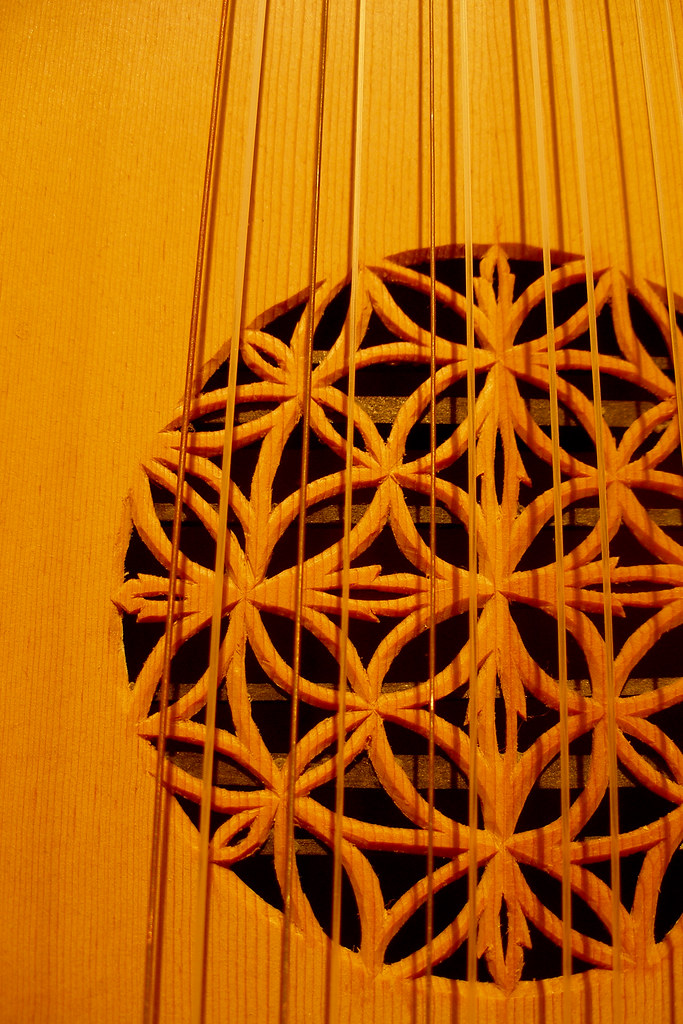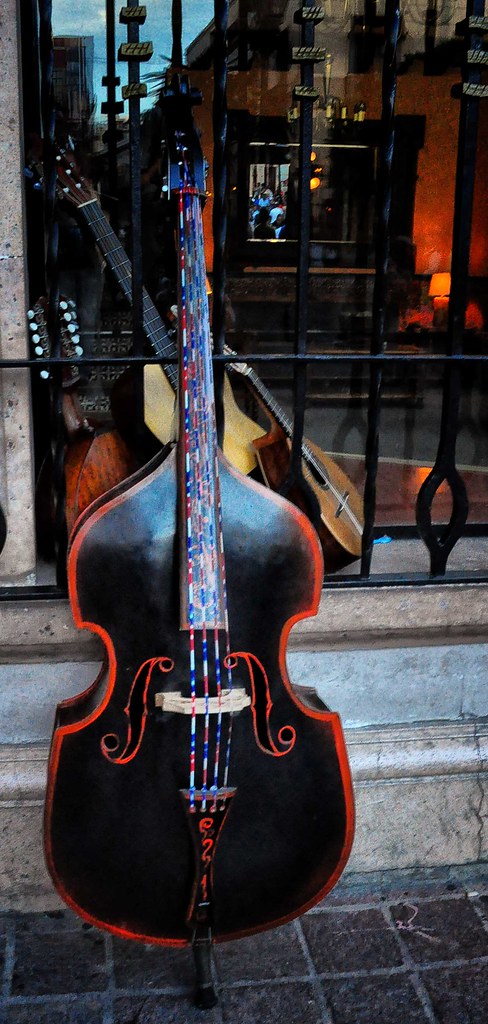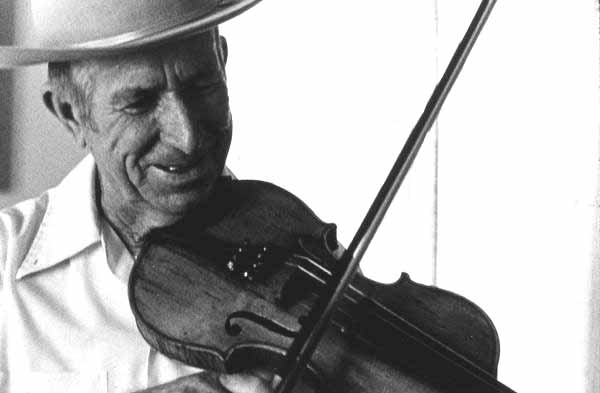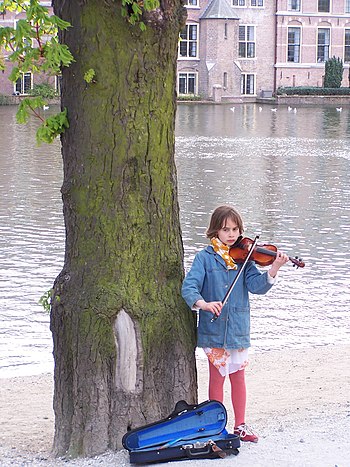
Turning the screw on a modern violin bow causes the frog (heel) to move, which adjusts the tension on the hair. - (Photo credit: Wikipedia)
It is important to develop good habits when caring for your violin bow. A good and responsive bow makes a huge difference in the sound of your instrument. There are several key points to remember to properly maintain your bow. Most importantly, always loosen the hair when you are finished playing. This is done by turning the bow screw counter-clockwise. You should feel the stick relax back into its original arch (camber). If the bow is left tightened for extended periods, the stick can lose its camber and can even warp. Furthermore, the hair can stretch out. If the hair stretches too much, you will not be able to tighten the bow to playing tension. It is vital to remember never to force a bow to tighten because it is possible to break the butt end of the stick by forcing it. If you can't tighten the hair, you should take it to your violin shop for a possible rehair. Bows should be rehaired depending upon use and the condition of the hair. There isn't one rule about how frequently to have a bow rehaired.
An additional key to caring for your bow is to remember never to touch the horsehair with your fingers, as dirt and oils can get on the hair that will cause it to lose its ability to accept rosin. In general, it is always a good idea to wash your hands before you play your instrument. Some peoples' hands tend to perspire profusely. Not only can the sweat remove the varnish from the stick, iit can also soil the hair at the frog. For those with sweaty hands, frequent hand washing is more than a recommendation -- it is a must. When perspiration builds up around the frog of the bow, it can attract grime that can cause the frog to get stuck in position on the stick. When this happens, the frog will not move -- even when the bow screw is turned to loosen the hair. If this happens, the frog should be taken off of the stick, using care not to allow the hair to become twisted. Then, the stick should be cleaned. If you find that your hand is "eating away" at the stick or the varnish, you can have your luthier apply a long leather to the handle of the stick to protect it. This is frequently done on fine bows to preserve the makers' stamp from wear and tear.
The frog glides back and forth on the stick by a simple mechanism of a bow screw and an eyelet. The bow screw is usually made of steel and the eyelet is usually made of brass. The brass eyelet is a much softer metal than the bow screw and can strip. If you find that you cannot tighten or loosen your bow, chances are good that they eyelet has become stripped. On occasion, it is possible to carefully remove the frog from the stick and turn the eyelet one-half of a turn, in order to locate some remaining thread left that has not yet become stripped. Then, it is possible to reset the frog back on the stick and reset the bow screw. This doesn't always work, but it is worth a try.
On the stick near the frog is the thumb leather and winding. The thumb leather is there to protect the stick from the thumb and thumbnail. Over time, your thumbnail can wear through the leather and start carving into the stick. If your thumb leather is warn, you should have it replaced at your next rehair. This will help preserve the stick and value of your bow.
The head of the bow is very fragile and under a lot of tension. At the head, you will find a tip plate. The tip plate can be made of metal, plastic, ivory or mammoth and is there to protect the head of the bow. If your tip plate is not made of metal, it can break when bumped or can crack if the hair isn't carefully inserted during a rehair. If it should crack or break, you should have it replaced immediately.
Using too much rosin is a common mistake made by many players. Rosin should be applied sparingly and only when needed. You should not see a white cloud of rosin come off the bow when you play. Once there is too much rosin in the hair, it is nearly impossible to get out. When you use too much rosin, it will build up on the strings and your sound can become very scratchy -- since you are essentially playing with rosin on rosin. Also, rosin can build up on your instrument and damage the varnish over time. To avoid this, it is important to wipe off your instrument, strings and bow shaft with a clean soft cloth each time you finish playing. Microfiber cloths work great for this.
Tightening the bow too much when you play is another common mistake. There is no rule for how tight a bow should be as it depends on the strength and camber of the stick and is different for every bow. If your bow is too tight, you will have trouble controlling your bow and it can become too bouncy when an even sound is desired. You can test how tight to make your bow by playing long and even strokes. The hair should just barely clear the stick at the middle of the bow. If you see a big gap between the hair and the stick, then your bow is too tight. You can keep experimenting with hair tension until you find that you have good control over the bow.
When you have developed good habits you will find it very easy to maintain your bow. Eventually, you should be able to do this without even thinking about it.
|














